Grass vs. Sod: Insights for Sustainable Landscaping
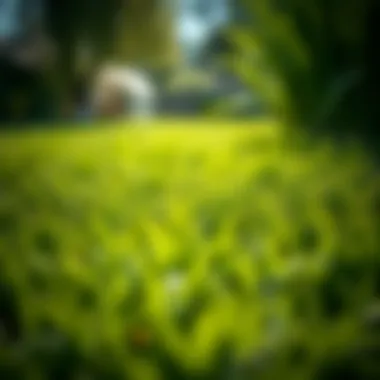
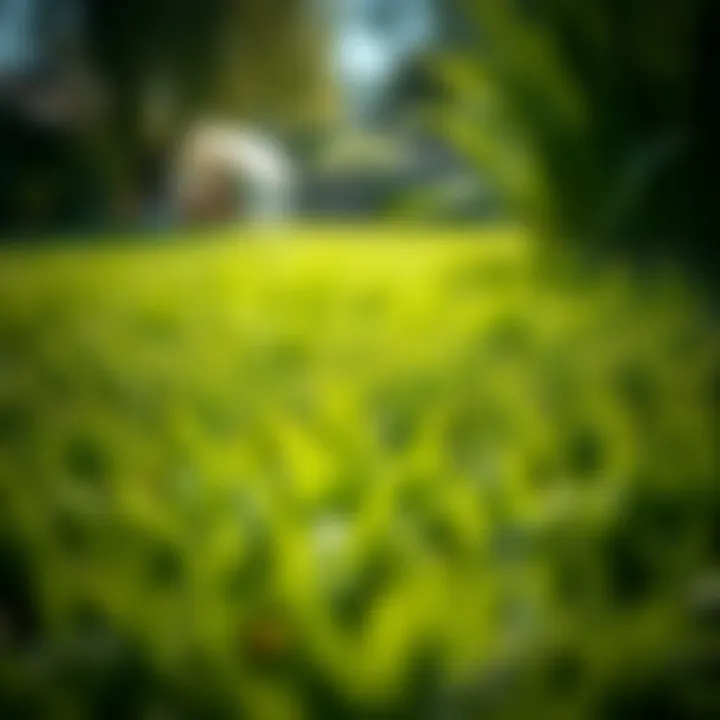
Intro
In a world where environmental awareness meets gardening and landscaping, the choice between grass and sod becomes pivotal in sustainable practices. With climate change and urban growth, understanding how each option affects ecosystems, biodiversity, and maintenance is essential for anyone transitioning from cautious observer to informed gardener.
Choosing grass means opting for a more natural approach that often requires patience and dedicated time, while sod provides instant gratification yet comes with its own challenges. It’s not just about looking good; it’s about the benefits or drawbacks they might bring along. Each approach has merits, and understanding these can steer you towards smarter decisions in your landscaping endeavors.
This narrative will unravel the essentials by diving deeper into the definitions, historical context, sustainable practices, and practical applications of both grass and sod. So grab a gardening glove and let’s dig into the earth of sustainable landscaping choices!
Prelims to Grass and Sod
Understanding the differences between grass and sod is essential for anyone involved in landscaping, gardening, or agriculture. Both options offer distinct advantages and challenges, making this knowledge vital for making informed decisions about land management and sustainability. This discussion will dive into the unique characteristics of each, alongside their respective benefits and considerations for sustainable landscaping.
One key element to consider is the context in which grass or sod would be implemented. Knowing the different environments, climate conditions, and the specific use cases—such as whether the area will be frequently walked on, shaded, or dry—can play a significant role in determining the right choice. Grass seeds offer the benefit of variety and adaptability, enhancing biodiversity, while sod presents an instant green solution that is ready to go relatively quickly.
It’s also important to reflect on sustainability. Choosing grass or sod impacts not just the immediate aesthetic outcome of a space but also the long-term ecological implications. For example, considering native grass species can often lead to reduced water usage and greater resilience against pests and diseases.
In this article, readers will gain a clearer understanding of these two options and their respective roles in sustainable landscaping, providing a comprehensive backdrop for going into deeper aspects later on.
Understanding Grass
Grass, in its myriad forms, is more than just the green stuff that cushions bare feet in summer. It is a complex organism that can thrive in various environments. Different grass species have distinct characteristics that make them better suited for certain climates and conditions. For example, cool-season grasses like Kentucky bluegrass flourish in northern climates where temperatures are moderate. On the other hand, warm-season grasses like Bermuda thrive in the southern regions, where it's hotter.
Grass has the remarkable ability to adapt to its surroundings. When planting grass seeds, the management required can be minimal; however, establishing and nurturing a robust lawn can take time. Patience is key because, unlike sod, which is an established product, grass seeds require regular watering and care until they take root. That being said, the rewards are often sweet, with the establishment of healthy, dense turf contributing to soil stability and preventing erosion.
Moreover, maintaining a diverse landscape by incorporating various grass types can improve overall biodiversity. This biodiversity not only supports local wildlife but can also lead to plants being more resilient to disease and pests.
The Concept of Sod
Sod, quite simply, is grass that has been cultivated and pre-grown in a controlled environment before being sold in sheets or rolls. This method of land treatment has gained popularity as it allows for immediate aesthetic satisfaction. A newly sodded lawn transforms a landscape, offering instant visual appeal. But with instant benefits come several considerations.
A critical factor to consider when opting for sod is whether the underlying soil is adequately prepared to receive this ready-grown grass. Proper soil aeration, drainage, and nutrient content are essential to ensure the sod can establish itself and avoid common pitfalls like diseases and weeds.
Another aspect to keep in mind is the environmental impact. While sod can create immediate lushness, it often requires more water than seed for the initial establishment period, and potential issues with chemical inputs might arise if not managed carefully. Hence, when considering sod installation, balancing instant gratification with the long-term health of both your landscape and the local ecosystem is of paramount importance.
By effectively weighing the options between grass and sod, individuals can align their landscaping strategies with sustainable practices, setting the groundwork for future discussions on installation techniques, maintenance, and environmental impacts.
Comparative Analysis of Grass and Sod
When considering sustainable landscaping, comparing grass and sod is not just a matter of preference; it’s about finding the right fit for your environmental goals, maintenance capacity, and aesthetic wishes. While both options serve to beautify our surroundings, they come with their own unique set of characteristics that can impact their performance over time. Understanding these differences is crucial for gardeners and landscapers who want to make the best choice for their green spaces.
Growth Time and Establishment
The rate at which grass or sod establishes itself can significantly influence your landscaping plans. Sod, being pre-grown, allows for immediate coverage and can transform a barren patch of earth into a lush landscape almost overnight. This instant appeal is one of sod’s strongest selling points. However, it requires careful handling during installation to avoid gaps and ensure strong establishment.
In contrast, grass sown from seed demands a patient approach. It might take weeks for that fresh green carpet to emerge, but this slower establishment phase can lead to a more resilient lawn. Seeded grass adapts to its environment, allowing roots to dig deep, ultimately yielding a stronger and healthier lawn over the long haul. Timelines and preparation are key, especially with seasonal changes and local climate in play.
Aesthetic Considerations
Aesthetics is a subjective realm when it comes to landscaping, yet it plays a pivotal role in decision-making. Fresh sod lays a uniform blanket of green, giving immediate visual satisfaction that is hard to beat. It's a quick solution for those who lack the patience to wait for seeds to germinate. Once installed, sod can create an impression of maturity that might take years of care and nurture for seeded grass to accomplish.
On the other hand, going the seed route offers a broader spectrum of possibilities. Different grass varieties can be mixed and matched, giving rise to unique textures and colors that reflect personal style. This flexibility allows for customizability that sod can’t match, as sod rolls usually consist of just one type of grass. There’s beauty in diversity, and the ability to choose native seeds provides an added bonus for those looking to enhance local ecosystems.
Environmental Impacts
Carbon Sequestration
Carbon sequestration plays a vital role in addressing climate change, and here’s where grass can shine. Grasslands are significant carbon sinks, absorbing CO2 from the atmosphere and storing it underground. Well-established grass lawns can greatly contribute to reducing one’s carbon footprint. In contrast, while sod also offers some level of sequestration, the carbon benefits can be less impressive during its initial growth period, as it is establishing roots.
Water Usage
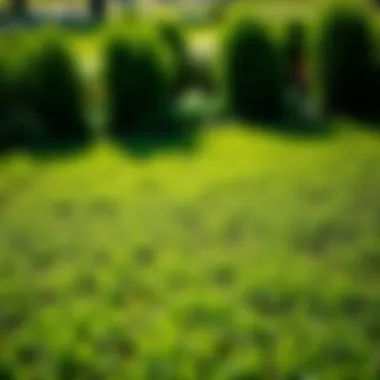
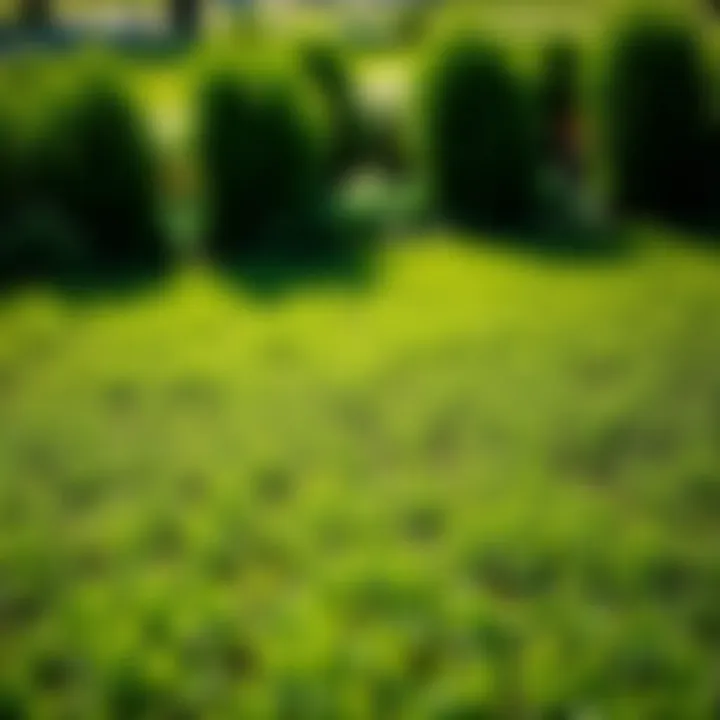
Water is the lifeblood of any garden, but not all grass types consume water at the same rate. Seeded lawns, particularly native varieties, often establish deep, extensive root systems that can access moisture further down in the soil. This allows them to withstand dry spells better than sod, which might require regular watering, especially in its first few weeks. Managing water usage effectively contributes not only to your wallet but also supports sustainable practices.
Biodiversity Considerations
Biodiversity is the spice of life, especially in ecological landscapes. Incorporating diverse grass types through seeding can promote a microhabitat for various insects and wildlife. This enhances soil health and creates a balanced ecosystem, while sod typically offers less biodiversity. It’s essentially a monoculture that might not contribute as effectively to the habitat compared to a wildflower lawn mixed with native grasses.
To ensure sustainable landscaping, it's essential to consider the long-term environmental impacts alongside the immediate aesthetic benefits.
In summary, the comparative analysis of grass and sod reveals essential insights that gardeners should weigh carefully. The immediate trade-offs between visual appeal and environmental sustainability can make the choice quite complex. Understanding growth times, aesthetic values, and environmental impacts will ultimately guide you towards an informed decision tailored to your unique landscaping goals.
Installation Techniques
When it comes to landscaping, the way you install grass or sod can make or break your entire project. The importance of proper installation cannot be stressed enough as it significantly affects the longevity, appearance, and health of your landscaping. Getting it right from the get-go not only ensures that your grass or sod thrives but also minimizes future maintenance and costs, ultimately leading to a more sustainable choice for your garden or yard.
Preparing the Ground for Grass
Before laying down grass seed or sod, you need to prepare the ground adequately. Poor preparation can result in uneven growth, poor drainage, and ultimately a patchy yard. Here’s how you can set the stage for success:
- Clearing Debris: Remove any rocks, weeds, old roots, or other debris that might hinder growth. A clean slate is critical for establishing healthy grass.
- Testing Soil: Evaluate your soil’s pH and nutrient levels. Conduct a soil test to understand what amendments may be necessary to create the best environment for your grass.
- Loosening Soil: Aerate or till the soil to break up compacted layers. This allows for better water absorption and root penetration, which is vital for young grass plants.
- Adding Amendments: Based on your soil test, you may need to add organic matter or fertilizers to boost nutrient levels. This step enhances soil quality and promotes robust growth.
- Leveling Surface: Level the ground to prevent water pooling. Uneven surfaces can lead to weak grass in low areas and unwanted flooding.
Taking these measures provides a solid foundation for your grass to grow and flourish, ultimately supporting your goal of sustainable landscaping.
Effective Sod Installation
Installing sod requires finesse and attention to detail. Effective sod installation ensures that your lawn looks lush and vibrant right from the start. Here are some essential strategies:
Site Assessment
A thorough site assessment serves as a cornerstone for successful sod installation. It requires evaluating various aspects of your lawn area, including sunlight exposure, shade patterns, and drainage issues. A good assessment involves:
- Soil Type: Understanding your soil type can guide you in choosing the right sod variety. For instance, heavy clay soils might not support all grass types, making it essential to select those designed for such conditions.
- Drainage Patterns: Identifying how water flows across your site allows you to avoid areas that puddle, which can suffocate the grass roots.
- Sunlight Exposure: Knowing which areas receive full sun versus shade helps in selecting the right sod that will thrive in those conditions.
Ultimately, a well-conducted site assessment is a smart first step that can save time and resources by ensuring you choose sod that matches your environment.
Proper Rolling and Seam Management
The art of proper rolling and seam management is crucial for a seamless finish when installing sod. Once you've laid down the sod, it's important to ensure good contact between the roots and soil. Here’s why it matters:
- Rolling: Gently rolling the sod ensures that it makes contact with the soil and decreases air pockets, which can inhibit root growth. This step promotes quicker establishment and creates a more uniform appearance from the get-go.
- Seam Management: Avoid gaps between the pieces of sod. Tight seams reduce the chances of weeds establishing themselves in those small gaps and make the overall appearance much more natural. Use a sharp knife to trim edges if needed, ensuring a tight fit.
- Monitoring: Keep an eye on seams as the sod establishes. If gaps appear, they may need additional rolling or reseeding to ensure a lush lawn from edge to edge.
"The key to a thriving lawn starts from the base—proper preparation and careful installation can turn a patch of land into a green oasis."
By mastering these installation techniques and recognizing the importance of preparation and execution, you can create a lush green space that offers both beauty and environmental benefits.
Maintenance Requirements
When it comes to sustainable landscaping, understanding the maintenance requirements of grass and sod is essential for ensuring long-term health, aesthetic appeal, and environmental impact. Each option comes with its unique set of needs, and matching these to your lifestyle and preferences can make all the difference in maintaining a vibrant landscape. By focusing on watering, fertilization, and mowing, homeowners and landscapers alike can create and sustain lush green spaces that are environmentally friendly and practical.
Watering Practices for Grass vs. Sod
Watering is one of the most critical aspects of maintaining both grass and sod. However, they require different approaches due to their growth patterns and installation techniques. Grass, especially when it is seeded, generally needs consistent moisture while it establishes its root system. Newly germinated grass typically requires light, frequent watering until it can stand on its own, often demanding about an inch of water weekly.
On the other hand, sod is much more forgiving in its initial water requirements.
- Initial Watering: Just after laying sod, it should be thoroughly soaked to ensure that it bonds with the soil beneath. The goal is to keep it moist at all times for the first two weeks.
- Long-term Watering: Once established, sod can adapt to a more regular watering schedule; usually, it's best to water deeply, but less often—this encourages robust root growth.
"Proper watering technique is the difference between a thriving lawn and a patchy mess."
Finding the right balance can be tricky but is fundamental to ensuring successful establishment and sustainability in a garden.


Fertilization Needs
Fertilization is another crucial factor in maintaining a healthy landscape. Grass and sod have differing nutritional requirements based on their growth cycles. Grass relies on a nutrient-rich soil to thrive, particularly during its active growing season in spring and summer. Regular soil testing can help determine exact nutrient levels needed; grass generally benefits from balanced fertilizers during its peak growth times, boosting not just growth but also resistance to disease.
In contrast, sod often comes with pre-applied nutrients; however, ongoing care is still essential.
- Post-Laying Fertilizer: A light application of fertilizer soon after installation can give sod the extra edge it needs and helps it adapt to the surrounding soil.
- Long-term Fertilization Routine: Beyond initial care, sod may need a specific nutrient ratio to maintain health; predominantly nitrogen and potassium to encourage growth and resilience.
Understanding the fertilization needs allows property owners to choose the right products carefully, ensuring sustainable practice and successful growth.
Mowing Guidelines
Mowing may seem simple, but it plays a pivotal role in the health of both grass and sod. Each type demands slightly different mowing schedules and height preferences to remain healthy and attractive.
For grass, maintaining the correct mowing height is crucial. Ideally, it should be mowed to a height of 3 to 4 inches. This height promotes deeper root development and reduces weed infestation. Grass that is cut too short may struggle, especially under heat stress.
Sod, however, can be mowed after it has established roots and is ready to bend to your cutting blades. It usually requires a similar height to grass, around 2.5 to 3.5 inches. To ensure a thick carpet of green, it's essential to mow regularly but adjust your schedule based on seasonal growth patterns.
- Frequency: During peak seasons, mowing can be required weekly, while other times, it may be every two weeks or even monthly.
- Equipment: A well-maintained mower—sharp blades, the right weight—can help make a cleaner cut, reducing stress on your lawn.
In the realm of maintenance, consistency yields the best results.
Choosing the right rhythm for lawn care helps maintain lush greenery, supports sustainable practices, and ultimately contributes to a healthy ecosystem. Understanding the nuances between grass and sod emphasizes the importance of tailored approaches. By learning the unique requirements of both, homeowners can safeguard their investments in landscaping while minimizing environmental footprints.
Costs and Budget Considerations
When evaluating options for sustainable landscaping, understanding costs is as essential as knowing which plants to choose. Using the right combination of grass or sod involves financial planning that stretches beyond just the initial purchase price. You will want to consider the long-term financial implications of your choice as well. This deeper look at costs and budget considerations ensures that your decision is both economically feasible and sustainable.
Initial Costs of Grass and Sod
The up-front costs of installing grass or sod are often the first thing people think about. Here’s a closer look at how these costs stack up against each other:
- Seed Costs: Planting grass from seed is usually the cheapest route. Generally, you could spend about $0.10 to $0.30 per square foot for high-quality seeds. While this initial investment is lower, it's worth remembering that you’ll need to invest more time and care to get the seed established successfully.
- Sod Costs: The price for sod is significantly higher, typically between $0.50 to $1.50 per square foot. However, it’s important to consider the immediate green coverage and how it establishes quickly, saving time and minimizing the waiting period before your lawn looks lush.
- Installation Fees: If you’re not the hands-on type, you might have to hire professionals to lay sod. Installation fees typically can add another $1 to $2 per square foot to your budget, depending on the complexity of the landscape. Grass from seed usually doesn’t incur these costs since it involves regular sowing and management.
In brief, if you��’re working within a tight budget, consider the pros and cons of each method before making a financial commitment.
Long-term Financial Implications
Looking beyond initial costs, the long-term expenses associated with maintaining grass or sod are also crucial in making your decision:
- Maintenance Costs: Grass from seed might need less initial care but could lead to higher upkeep costs in the long run. Regular watering, fertilization, and mowing can add to costs that creep up annually. In contrast, sod provides a stronger initial establishment, often leading to lower general maintenance needs.
- Durability and Lifespan: Established sod can withstand wear and tear more effectively than newly seeded grass, potentially saving money in repairs, reseeding, and other associated expenses. For example, if you have kids or pets that enjoy being outside, choosing sod might be the more economic option.
- Water Usage: Another factor worth mentioning is water usage. Sod, especially varieties that have been bred for drought resistance, might offer greater efficiency in water use long-term compared to typical grass seeds. With water prices fluctuating based on regulations and regional restrictions, this can make a notable difference in ongoing costs.
"Examining costs from multiple angles helps ensure that your landscaping approach aligns with long-term goals and eco-friendly practices."
Choosing the Right Option
Choosing the right option between grass and sod is a crucial decision when it comes to sustainable landscaping. This choice may significantly influence not only the aesthetic appeal of your property but also its environmental footprint and maintenance requirements. For an informed decision, one must evaluate various factors such as personal landscaping goals, local climate conditions, and the unique properties of the soil. Each of these elements contributes to understanding which choice is more suitable for individual circumstances.
Evaluating Your Landscaping Goals
Before breaking ground, it’s essential to articulate what you want to achieve with your landscaping. Are you looking to create a lush, green lawn for recreational activities or simply seeking a quick and visually appealing solution? Your goals will dictate the direction taken in selecting between grass and sod.
- Recreational Use: If your yard serves as a play area or entertaining space, sod might be the better choice due to its immediate coverage and durability.
- Aesthetic Appeal: For a polished look, sod offers that instant gratification and can even enhance property value.
- Environmental Considerations: If your aim is to promote native biodiversity or minimize water usage, certain grass varieties suited for your local ecosystem could be more beneficial.
Setting these goals clearly will inform not only the type of grass or sod you choose but also how it aligns with other aspects of your landscaping projects.
Considering Local Climate and Soil Type
Understanding how local climate conditions and soil types interact with your landscaping decisions can not be overstated. Different grass varieties and sod compositions thrive under various circumstances.
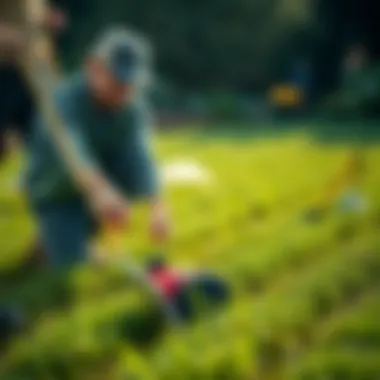
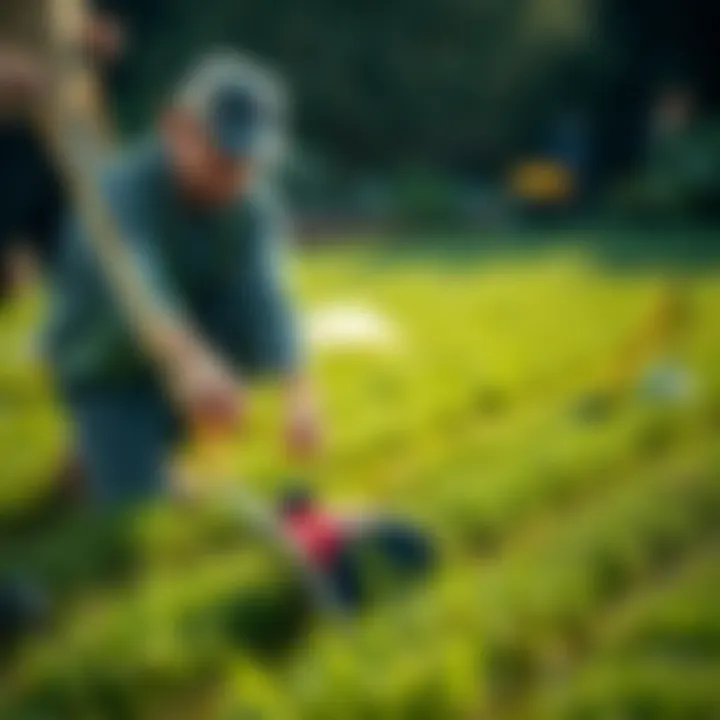
- Climate: The first thing to consider is whether your environment is primarily dry or wet, hot or cold. For instance, Bermuda grass tends to flourish in warmer climates, while Kentucky bluegrass is more suited for cooler regions.
- Soil Type: Testing your soil's pH, texture, and nutrient level can dramatically change the outcome of your landscaping. Sandy soils may drain quickly but lack nutrients, while clay soils retain moisture but can inhibit growth if not properly managed.
Taking into account these local factors ensures that whichever product you choose, it will establish well and offer lasting benefits to the environment.
Consulting with Professionals
Engaging with landscaping professionals brings valuable insight that can prove pivotal when making the right choice. They can offer a wealth of knowledge on local conditions, viability of different grass types, and the best installation practices.
- Expert Assessment: A knowledgeable landscaper can evaluate your property and recommend personalized options based on your specific goals and local requirements.
- Project Management: Professionals can assist in managing the installation and maintenance processes, ensuring that everything goes as planned and that your landscaping flourishes.
- Long-term Planning: Their expertise extends into future planning, enabling you to establish a landscape that remains sustainable and beautiful for years to come.
In the end, the best decision comes from a blend of personal desire, environmental awareness, and expert guidance. So, as you embark on your landscaping journey, keep these elements in mind to choose the right option that aligns with your vision for a sustainable landscape.
Sustainability in Grass and Sod Choices
When it comes to landscaping, the term sustainability is thrown around quite a bit, but its essence runs much deeper than surface-level commitments. Sustainability in grass and sod choices isn't merely about opting for a green lawn; it invigorates a holistic approach that incorporates environmental health, personal values, and long-term viability. Choosing between grass and sod can have lasting implications on water resources, local ecosystems, and even on a gardener’s wallet.
One primary consideration in the sustainability landscape lies in the environmental implications tied with these choices. Here, we're not just discussing aesthetics but the broader context—how these options align with conservation, biodiversity, and resource management.
Benefits of Sustainable Choices:
- Water Conservation: Both grass and sod can vary drastically in their water requirements. Opting for drought-resistant native grasses can significantly lower water usage over time.
- Ecosystem Support: Local flora and fauna thrive in areas where native plants are the norm. A choice of native grasses supports local wildlife, including pollinators, creating a vibrant ecosystem.
- Soil Health: Certain grass species contribute positively to soil health by reducing erosion and improving soil structure, whereas synthetic sod often requires high maintenance and chemical inputs.
The very act of choosing grass or sod can impact not just the individual garden but the larger environmental tapestry. The emphasis on native and organic options unveils a roadmap toward responsible landscaping—one where decisions are made with an eye toward sustainability, rather than immediate gratification.
Native Grass Alternatives
Diving deeper, native grass alternatives stand as a beacon for sustainable landscaping. These species are not only adapted to local climates but also require less intervention in terms of water and pesticide treatments. The indigenous flora supports local wildlife and minimizes the need for extensive maintenance, making it a win-win choice.
Some popular native grasses such as Little Bluestem (Schizachyrium scoparium) or Switchgrass (Panicum virgatum) offer aesthetic beauty while ensuring ecological balance. By incorporating these grasses, gardeners can create lush spaces that celebrate regional landscapes.
Key Advantages of Native Grasses:
- Low Water Requirement: These grasses naturally adapt to local rainfall, requiring minimal irrigation.
- Drought Resistance: Native grasses can withstand harsh conditions, making them ideal for erratic climates.
- Support for Wildlife: They provide essential habitats for native species, including birds and insects.
Incorporating native grasses not only beautifies an area but also strengthens the ecological resilience of your property. Sustainable practices here go hand-in-hand with long-term benefits.
Organic Sod Options
On the other hand, the sod market is evolving, with organic options emerging as a feasible alternative. Organic sod, being cultivated without synthetic fertilizers or pesticides, aligns more closely with the sustainability ethos. It fosters healthier soil ecosystems, reduces chemical runoff, and promotes environmental well-being.
While organic sod may come with a steeper price tag initially, the long-term benefits can outweigh the costs when considering environmental impact. Furthermore, organic sod varieties, such as fescue or Kentucky Bluegrass, lend themselves to better soil health, which translates to reduced maintenance needs in the future.
Benefits of Opting for Organic Sod:
- Chemical-Free: Support for chemical bans means healthier soil and safer play areas, especially relevant in families with small children or pets.
- Enhanced Biodiversity: Organic methods foster a rich community of micro-organisms in the soil, crucial for plant health and environmental stability.
- Resilience Against Pests: Strengthened soil health can lead to decreased pest invasiveness, reducing the need for costly treatments.
Overall, opting for organic sod can be a motivated step toward a more sustainable lifestyle and supports local agricultural practices.
The conversation around sustainability is one of continual adaptation and learning. Approaching landscaping choices with critical thought enhances not only our gardens but also our world.
Whether leaning toward native grass alternatives or organic sod, the crux lies in mindful decision-making that acknowledges the interdependencies of our ecosystems. It's about making choices that resonate with values of sustainability, leading us towards greener pastures—literally.
End: Making an Informed Decision
The choice between grass and sod in landscaping is not merely about aesthetics; it’s a crucial decision that holds implications for sustainability, maintenance, and financial considerations. As we’ve explored throughout this article, both options have their unique advantages and challenges that need careful examination. Making a well-informed choice boils down to aligning the selection with your specific goals and the ecological context of your area.
Key Factors to Reflect On:
- Sustainability: Understanding which option promotes ecological health is paramount. Native grasses often require less water and are more resistant to local pests. On the other hand, some sod options can enhance immediate green space but may demand higher inputs in terms of resources.
- Installation and Maintenance: The process of laying sod can be a straightforward path to an instant lawn, while growing grass from seed may require patience and various maintenance practices. These aspects can significantly influence your overall experience and satisfaction.
- Financial impact: Initially, sod might seem like the pricier option; however, when considering long-term maintenance costs, grass may turn out to be more economical. Thus, calculating life-cycle costs is essential for making economically sound decisions.
Also consider your local climate and soil composition, which can dictate the success of either method. Consulting with local experts or community resources could provide additional insights tailored to your specific environment.
In summary, the decision should not be taken lightly. An informed choice considers both immediate desires and long-term consequences. You'll want to weigh the aesthetic qualities against practical upkeep and environmental impact. As with any aspect of landscaping, balance is key to achieving sustainability in your outdoor spaces.
"Landscaping is both an art and a science; understanding this thin line will help ensure that your choices resonate with both nature and aesthetics."
For further information on sustainable landscaping practices, consider checking resources such as USDA and EPA for guidelines on native landscaping and water conservation.



